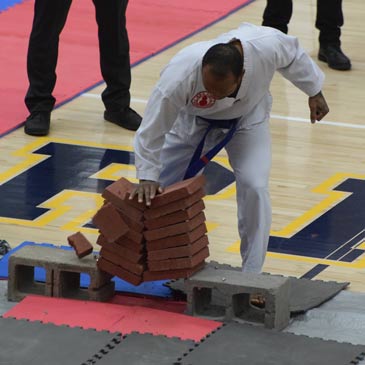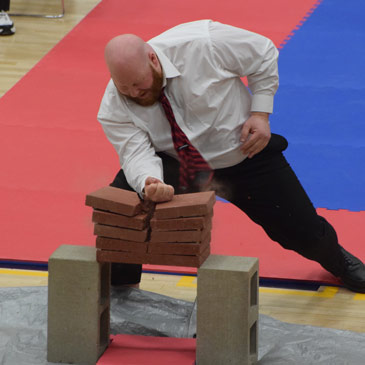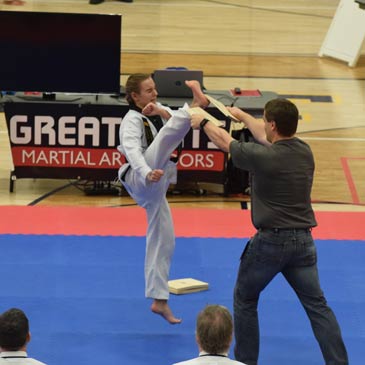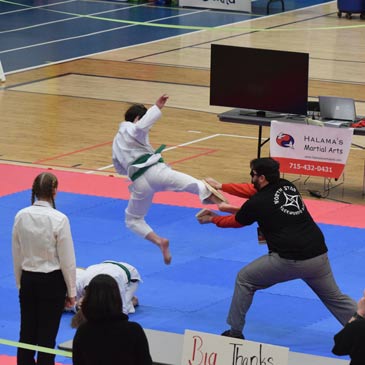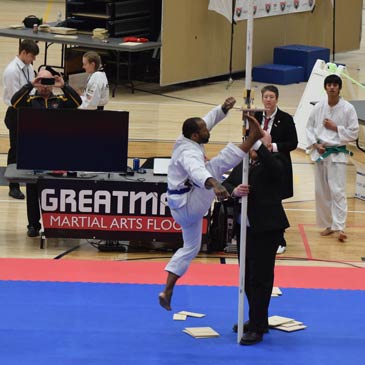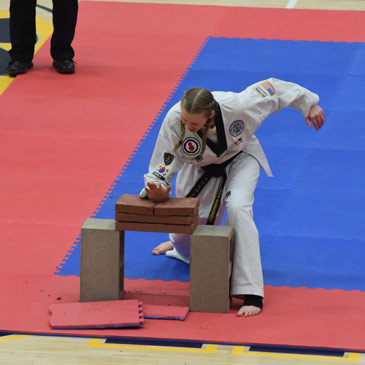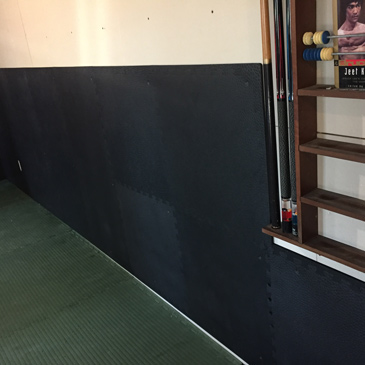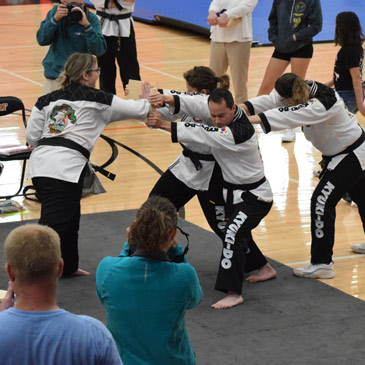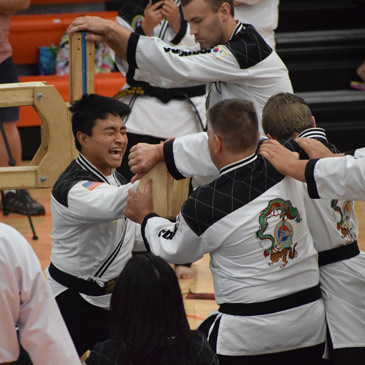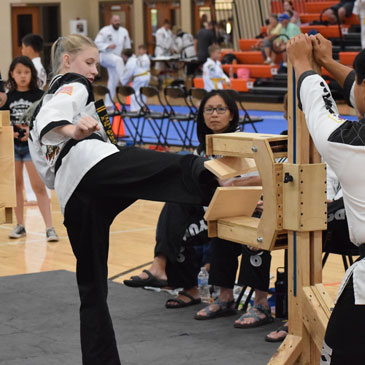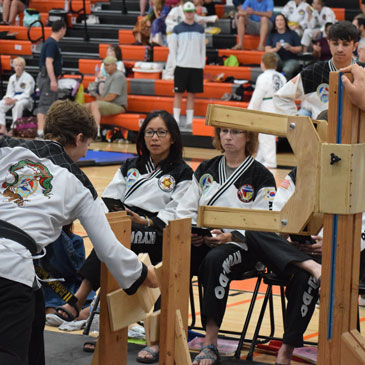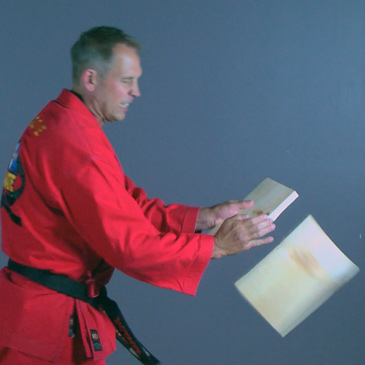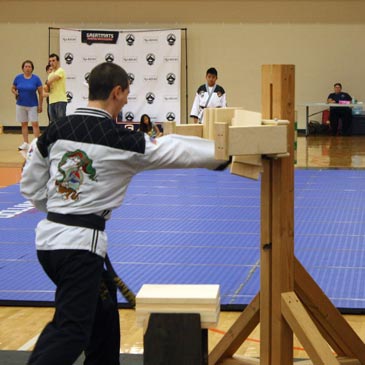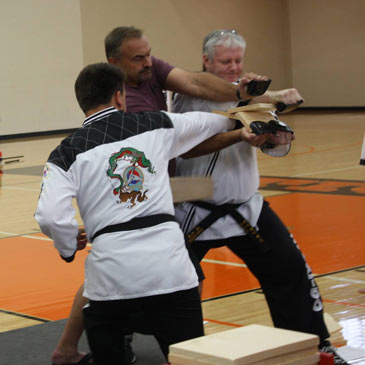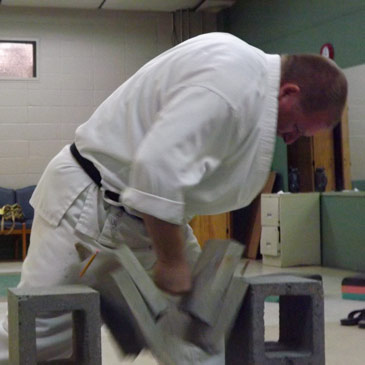What Are the Best Floor Mats for Martial Arts Board and Brick Breaking
Related Product: Rubber Flooring Rolls Geneva 1/4 Inch Black Per SF
Depending on what type of break you’re doing, you may need something firm on the ground that won’t be too squishy, or something that will stop flying objects from poking holes in sheetrock walls. In many cases, it may be advantageous to use something that is lightweight and portable, especially in the case of a competition or tournament venue where a permanent installation is not feasible. Here are some great tested and approved mats that are popular for martial arts board breaking - no matter if it’s for Taekwondo, Karate, Pencak Silat or any other striking art.
Brick Breaking
In most cases brick breaking takes place in a supported manner. In this case there is a lot of force that goes into breaking the bricks. If you are doing a downward break with something like a downward palm heel strike, axe kick or downward backfist, you’ll likely have something sturdy like cinder blocks under the edges of the bricks or concrete patio blocks. Such things can be quite abrasive and heavy, especially with the bricks on top. This is not ideal for places like school gymnasiums with pristinely finished hardwood floors as the cinder blocks often have rough edges that will scuff, scratch or gouge the floor if the blocks were to shift. Plus when you break the bricks, the broken pieces generally fall from a significant enough height as to dent a hardwood floor or worse.In many cases you may see someone lay a tarp down underneath the breaking area. This is great from containing the debris but does little to stop the impact of the bricks onto the finished floor below the tarp.
Board Breaking
With wood boards being much lighter weight and thinner, they are much more common for speed breaks or unsupported breaks. They also have more tendency for pieces to go flying. The last thing you want to see at your academy is your star student using that spinning hook kick to open up that drywall barrier between you and your neighbor with a flying chunk of pine.When speed breaking wood boards it’s very common to see one, if not more, section of the board twist, turning and flipping through the air after the break. Though the board is light, it still contains sharp corners that will damage a foam mat or fairly fragile home dojo wall material.
Rubber Breaking Mats
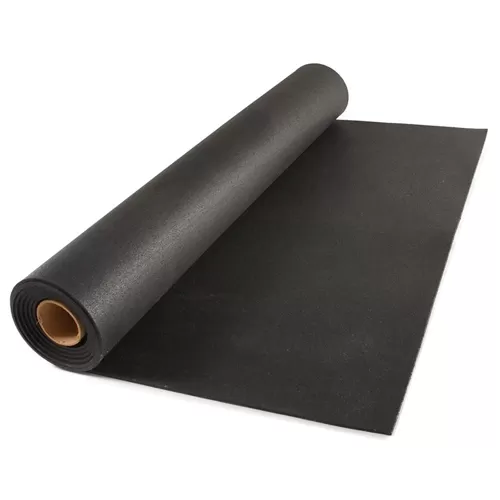
One durable material that will do an outstanding job of absorbing that impact and protecting the floor below is rolled rubber, with at least a ¼ inch thickness. This material is very firm and rugged and will hold up well to the falling bricks. If your brick breaking set up it’s higher than the typical low section area, such as for a midsection, or high section punch, you’ll want to increase the thickness of the rubber accordingly, whether that means doubling or tripling up your rolled rubber mats or using one of greater thickness to start with.
Most rubber mats come in a 4 foot width, providing a nice size landing pad for the brick fragments. In most cases a 10 foot long roll is more than enough for a single breaking station, but if you’ve got multiple breaks taking place in a series, it may be beneficial to create a breaking lane. The nice part about rolled rubber is that it can come in custom lengths, so it can accommodate any size of school or number of practitioners.
Note: If using rubber over a finished hardwood floor, keep in mind that in some cases the wood finish can react to the rubber material, so do not leave the rubber mat in place for long periods of time, or be sure to use a protective paper underlayment.
Protective Foam Breaking Mats
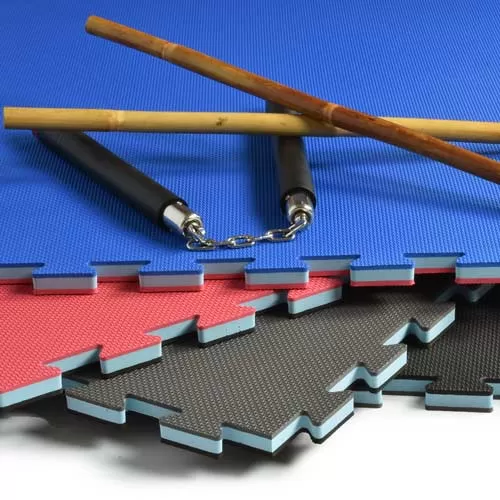
Your EVA foam puzzle mats can also be a good breaking mat. While these mats will have more give than the rubber rolls, Greatmats martial arts puzzle are firm enough to support most breaking support apparatuses. They’re also super easy to customize the size of your breaking station by connecting multiple tiles together.
This can be a great way to repurpose your old mats or use scraps from mats you have custom cut to fit your dojo.
If you’re going out to buy puzzle mats specifically for this purpose, in most cases you can get by with a super dense 20 mm thick mat or a traditional puzzle mat of at least ½ inch thickness.
They are also pretty easy to cover a sheetrock wall by driving screws through the corners to create some inexpensive diy home wall padding. This can save you a lot of heading down the road.
For breaking that takes place above the waist, you’ll want to make sure to have at least 3/4 inch of thickness to ensure a poorly positioned falling brick does not cause problems with the floor below. Again, you can layer the mats or simply use a thicker version.
Note: Keep in mind, sharp objects will puncture EVA foam, so they may not look as nice over time and with repeated use for this type of activity, but they will continue to perform for you.
Protective Carpet Mats for Martial Arts Breaking
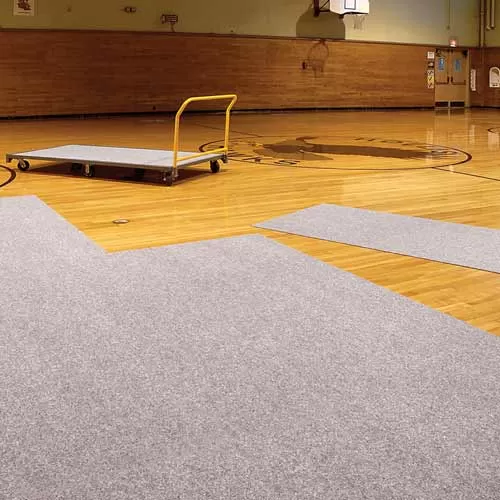
When it comes to carpet mats for board and brick breaking. There are two different options that may appeal to you.
If you use a carpet topped rollout mat like used for gymnastics or cheerleading for your dojo or dojang floor and training surface, there are no additional mats needed. These mats are already quite puncture resistant and will protect the floor below just fine.
If you want something that will look nice for a temporary setup over a basketball court or other hardwood floor, you may want to look into a gym floor covering carpet tile. These too are quite firm, so you won’t have to worry about losing much power from your striking techniques.
No matter which of these board breaking or brick breaking floor mats you use, cleanup can be pretty easy as well. Simply sweep up the large debris with a broom and dustpan and follow up with a vacuum. If that doesn’t take care of all of the dust, a damp mop and mild floor cleaner will finish the job for all but the carpeted options.
